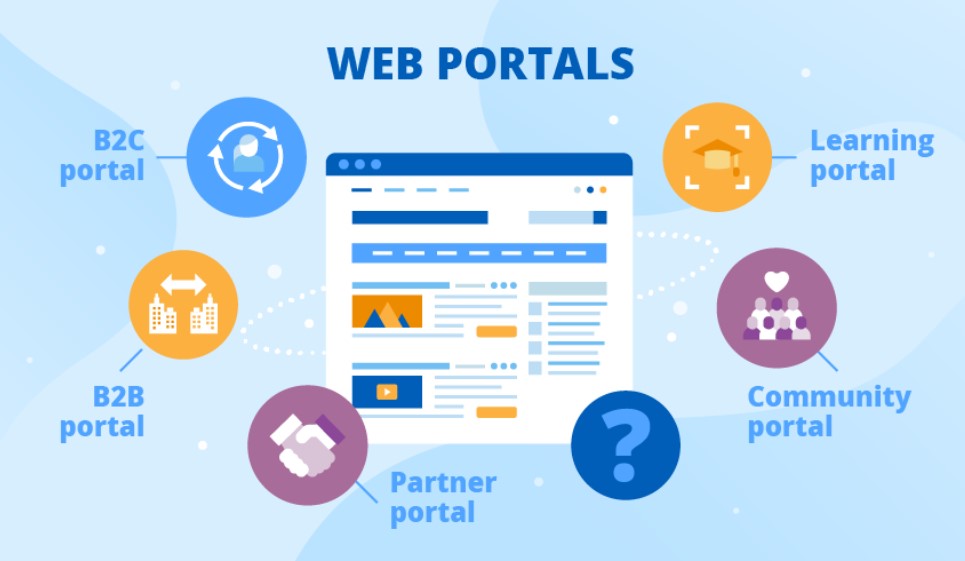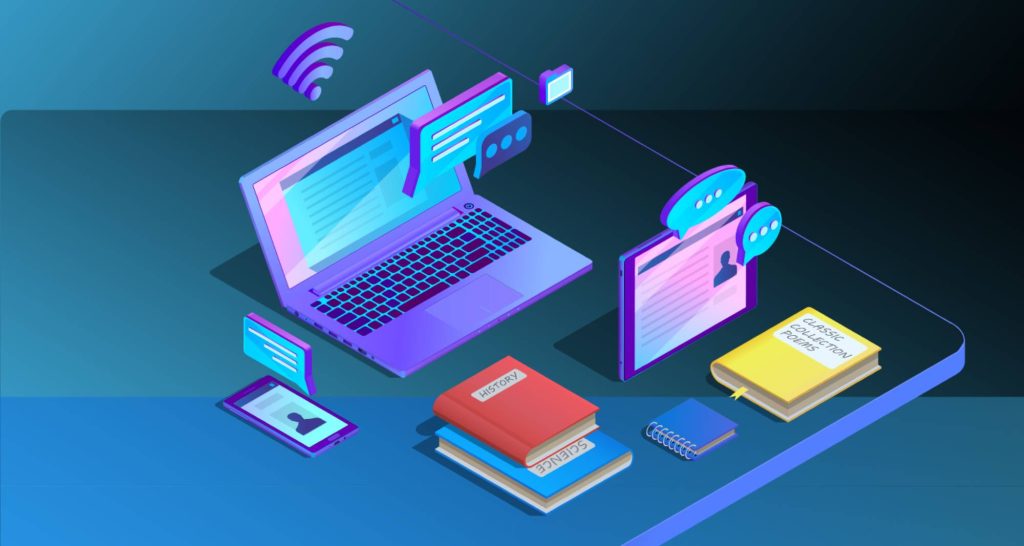Step into the world of digital doorways and be prepared to unlock a universe of information and services. Yes, we are talking about web portals—your ultimate access key to the plethora of data, tools, and interactive systems available on the internet. A web portal isn’t merely a website; it’s a sanctuary where multiple facets of content and applications gather under one roof. This well-organized, user-centric avenue streamlines how you interact with the web. In this comprehensive article, we’ll delve deep into what is a web portal, its various types, shining examples, and so much more. Let’s go!
The Essence of Web Portals
Web portals are gateways that provide centralized access to a myriad of resources. Think of them as a kind of digital Swiss Army knife. They often serve as a one-stop-shop, amalgamating different types of content, be it articles, videos, or even specialized applications. It’s no longer about hopping from one website to another; web portals pull multiple functionalities together, giving you the ultimate user experience.
When you interact with a web portal, you’re not just a spectator. You become a participant. You have the ability to customize what you see, and in many cases, even what you can do. Personalization is a crucial element, offering a user interface that is tailored to your needs and preferences. This ensures that the content and resources you need are accessible at a glance, making your digital life infinitely simpler.
So, what is a web portal in relation to the broader internet landscape? In simple terms, if the internet were a sprawling metropolis, web portals would be its grand malls—places where you can find everything you need in a coherent, organized manner. With a unified login, these portals often incorporate elements like email services, search engines, and community forums.
While the internet is all about connecting the globe, internet portals also play a significant role in intranet networks. These are restricted networks within an organization, where employees can access company resources, documents, and internal communications, all centralized for efficiency and ease of use.
The primary utility of a web portal is to eliminate clutter. With the massive scale of information available on the internet, sorting through the chaos can be overwhelming. By using web portals, you can filter through the noise and focus on what’s genuinely important to you.

Types of Portals You Must Know
It’s essential to distinguish between types of portals, as each has unique features and uses. Personal portals, for example, are highly customizable. These are like your private digital assistant, helping you organize your life—from the news you read to managing your email.
Corporate portals are another breed entirely. These are often more formal and structured, facilitating intra-company communication, sharing of resources, and even project management. They provide a unified access point for employees, consolidating all the tools and data required for their day-to-day operations.
Moving into the academic realm, educational portals are digital doorways into the world of learning. These portals often provide access to a wealth of educational materials, online courses, and collaboration tools for both students and educators. They are designed to enhance the educational experience by providing a centralized hub for all learning-related activities.
Community portals aim to bring like-minded people together. Whether it’s a shared hobby, profession, or even a geographical location, these website portals serve as a gathering place for members to communicate, share ideas, and disseminate information.
Then there are government portals—often the epitome of a centralized information system. These portals offer comprehensive details about public services, laws, and citizen’s rights. The idea is to make governance more transparent and accessible to everyone, bridging the gap between authorities and citizens.
Concrete Examples that Illuminate the Way
A great way to understand web portals examples is to look at some shining stars in the field. Yahoo! is a prime example of a horizontal portal that offers a wide range of services, including news, email, and search facilities. On the other end, industry-specific vertical portals like WebMD focus solely on healthcare information.
Another standout example is Google’s Suite for Education, an educational portal that offers an ensemble of productivity and collaborative tools for students and teachers. Everything from Google Docs to Google Classroom is integrated into a single, user-friendly interface.
If you’ve ever attended a university, you’ve likely encountered an academic portal. These portals centralize course schedules, resources, grades, and communication tools, providing everything a student or faculty member needs in one location.
For professionals, LinkedIn serves as a networking portal, bringing jobseekers and recruiters onto a common platform. Here, users can share their work experience, skills, and even recommendations in a structured way, facilitating easier job placements and collaborations.
Let’s not forget about governmental portals such as the USA.gov, which consolidates an array of information, from tax guidelines to voting procedures, under one banner. This site is an excellent example of how web portals can provide extensive, yet easily navigable, repositories of information.

Deciphering Online Portals
Now, you might ask, what is an online portal, and how does it differ from a web portal? The terms are often used interchangeably, but make no mistake; all web portals are online portals, but not all online portals are web portals. Confused? Let’s unravel this.
An online portal typically refers to any accessible site on the internet that offers a specific service or resource. This could range from a blogging site to a dedicated video-sharing platform. However, the term ‘web portal’ carries a connotation of centralization and personalization.
Online portals may be open to everyone, but web portals often require user authentication, creating a personalized user experience. They also feature a blend of various services and information, assembled in a cohesive, unified environment.
The focus on customization and user engagement is what really sets web portals apart. While an online shopping site can be considered an online portal, it doesn’t offer the extensive range of services and functionalities that a web portal would, such as integrated email services, community forums, and personalized content streams.
So, when we define a web portal, it’s essential to note this element of unified, customizable services that make your online experience not just convenient, but also unique to you.
A Detailed Look at Portal Websites
What is a portal website? At its core, a portal website is designed to act as a principal gateway to an array of information and services. However, what sets portal websites apart from regular websites is the level of interaction they offer. These aren’t static pages; they’re dynamic environments that adapt and grow according to user input.
These sites often incorporate sophisticated algorithms to understand user behavior better, offering a personalized touch. The more you interact with the portal, the more it learns about your preferences, continually refining the resources and content it presents to you.
Whether it’s an enterprise portal or a community-focused one, user-generated content often forms a substantial part of the offering. This could range from forum discussions and reviews to personalized blogs and social media integration.
User-friendliness is another key feature of portal websites. These portals often go to great lengths to offer an intuitive user interface, easy navigation, and quick load times. This ensures that users not only find what they’re looking for, but also enjoy the process of exploring the portal.
Lastly, security is paramount in portal websites, especially those dealing with sensitive information. Whether it’s a healthcare portal holding patient records or a financial portal responsible for transactions, these websites employ robust security measures to protect user data.

How Portals Are Revolutionizing the Internet
The term internet portals may seem a bit dated, but the concept is continuously evolving. From pioneering examples like AOL and Yahoo! in the early internet era, we have come a long way. Today, portals are more than just a convenience; they’re a necessity in the ever-growing, complex digital universe we navigate daily.
The introduction of machine learning algorithms and AI has given portals the ability to adapt and evolve at an unprecedented pace. No longer limited to merely providing links and centralized information, today’s portals offer predictive analytics, smart recommendations, and even virtual assistance, thereby offering a truly interactive experience.
Moreover, portals are not just confined to desktop experiences anymore. With the rise of mobile technology, portals have adapted to provide seamless access across multiple platforms and devices. This multi-platform approach ensures that users can interact with the portal anytime, anywhere, making it an integral part of our digital lives.
The growth of IoT (Internet of Things) technology has also influenced the capabilities of web portals. Now, portals can interact with smart devices, collecting data and providing useful insights, further enhancing user engagement and convenience.
The ongoing developments in blockchain technology are setting the stage for even more secure and transparent portals. With decentralized systems, users can have more control over their data while benefiting from increased security and reliability.
Conclusion
In a world dominated by a sea of information and endless digital paths, web portals stand as navigational lighthouses, guiding us through the complex digital landscape. From their personalized offerings to their multi-platform capabilities, these digital sanctuaries have become indispensable tools for both individuals and organizations. What is a portal site today may not be the same tomorrow, as the landscape is continually evolving, driven by technological advances and changing user needs. However, one thing is clear: web portals will continue to play a critical role in organizing our digital lives, making them more efficient, secure, and engaging.
So the next time you log into a portal, be it for work, education, or leisure, take a moment to appreciate the power and convenience these unique digital realms offer. You’re not just accessing a website; you’re stepping into a meticulously crafted digital universe designed to enhance your online experience. Welcome to the future of the web.